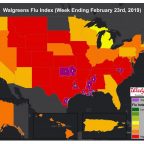Tips on How to Claim the Saver’s Credit (Retirement Savings Contributions Credit)
American workers may be unknowingly overlooking a tax credit this year. The Saver’s Credit, also referred to as the Retirement Savings Contributions Credit by the Internal Revenue Service, is available to eligible taxpayers who are saving for retirement, yet 64 percent of workers are unaware of the credit, according to the 18th Annual Transamerica Retirement Survey.
“As a tax credit, the Saver’s Credit is an important incentive to save for retirement in a 401(k), 403(b) or IRA. By saving for retirement and claiming the credit, eligible taxpayers may be able to lower their federal income taxes,” said Catherine Collinson, president of nonprofit Transamerica Center for Retirement Studies. “Millions of Americans who are already saving for retirement could be missing out on the Saver’s Credit simply because they don’t know it exists. Among those who are not yet saving for retirement, the Saver’s Credit could be the incentive they need to get started.”
What Is the Saver’s Credit?
The Saver’s Credit is a non-refundable tax credit that may be applied up to the first $2,000 of voluntary contributions an eligible worker makes to a 401(k), 403(b) or similar employer-sponsored retirement plan, or a traditional or Roth IRA. The maximum credit is $1,000 for single filers or individuals and $2,000 for married couples.
“The Saver’s Credit is a tax credit in addition to the benefit of tax-advantaged savings when contributing to a 401(k), 403(b) or IRA. Many eligible retirement savers may be confusing these two incentives because the notion of a double tax benefit seems too good to be true,” said Collinson.
Who Can Claim the Saver’s Credit?
The credit is available to workers ages 18 years or older who have contributed to a company-sponsored retirement plan or IRA in the past year and meet the Adjusted Gross Income (AGI) requirements:
- Single filers with an AGI of up to $31,000 in 2017 or $31,500 in 2018 are eligible;
- For the head of a household, the AGI limit is $46,500 in 2017 or $47,250 in 2018; and,
- For those who are married and file a joint return, the AGI limit is $62,000 in 2017 or $63,000 in 2018.
Additionally, the filer cannot be a full-time student and cannot be claimed as a dependent on another person’s tax return. For more details about eligibility, refer to this fact sheet and infographic.
How Can Workers Claim the Saver’s Credit?
“Workers who are eligible to receive the Saver’s Credit are at risk of missing it if they use the wrong tax form. If you are eligible to claim the Saver’s Credit, you should use Form 1040, Form 1040A or Form 1040NR. The Saver’s Credit is not available on Form 1040EZ,” said Collinson.
Another important and potentially overlooked opportunity is the IRS Free File program. Workers who are eligible to claim the Saver’s Credit are also eligible to take advantage of this program that offers federal income tax preparation software for free to tax filers with an AGI of $66,000 or less. Unfortunately, a concerning 55 percent of workers are unaware of this program, according to the 18th Annual Transamerica Retirement Survey. Twelve companies make their tax preparation software available through this program at www.irs.gov/FreeFile. Certain restrictions may apply.
Tips for claiming the Saver’s Credit:
- If you are using tax preparation software to prepare your tax return, including those programs offered through the IRS Free File program, use Form 1040, Form 1040A or Form 1040NR. The credit is not available with Form 1040EZ. If your software has an interview process, be sure to answer questions about the Saver’s Credit, also referred to as the Retirement Savings Contributions Credit and/or Credit for Qualified Retirement Savings Contributions.
- If you are preparing your tax return manually, complete Form 8880, Credit for Qualified Retirement Savings Contributions, to determine your exact credit rate and amount. Then transfer the amount to the designated line on Form 1040, Form 1040A or Form 1040NR.
- If you are using a professional tax preparer, be sure to ask about the Saver’s Credit.
- If you receive a refund, consider directly depositing it into an IRA to further boost your retirement savings.
TCRS has created fact sheets, infographics and newsletter articles – in English and Spanish – that are available and encouraged for public use at www.transamericacenter.org/saverscredit. More information can also be found at www.irs.gov.
About Transamerica Center for Retirement Studies
Transamerica Center for Retirement Studies® (TCRS) is a division of Transamerica Institute®, a nonprofit, private foundation. Transamerica Institute is funded by contributions from Transamerica Life Insurance Company and its affiliates and may receive funds from unaffiliated third parties. TCRS and its representative cannot give ERISA, tax, investment or legal advice. This material is provided for informational purposes only and should not construed as ERISA, tax, investment or legal advice. Interested parties must consult and rely solely upon their own independent advisors regarding their particular situation and the concepts presented here. For more information about TCRS, please refer to www.transamericacenter.org






